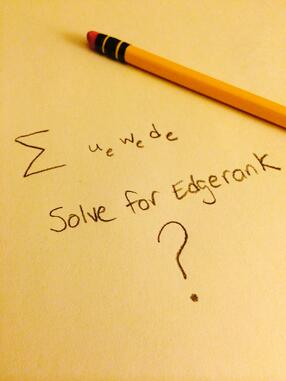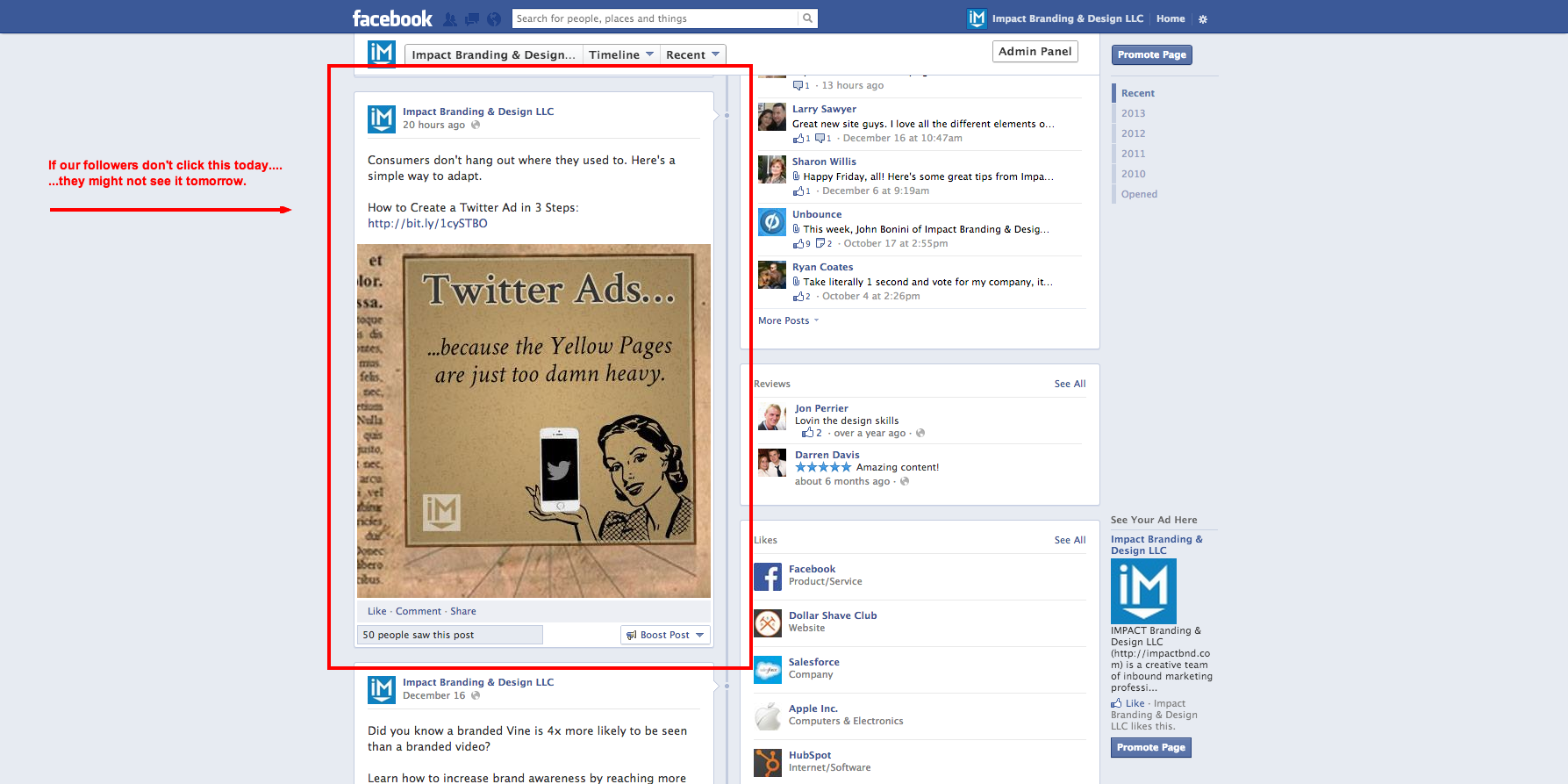
In a perfect world, our Facebook updates are as expansive as our minds are hopeful.
They get liked. Shared. Clicked. They're witty, elicit laughter, and most of all, inspire action that leads to a purchase.
But thanks to Facebook's algorithm Edgerank, this simply isn't even possible under the best of circumstances anymore.
Edgerank is an algorithm developed by Facebook to govern what is displayed – and how high – on the news feeds of your audience.
(Okay, so technically Facebook "retired" the name Edgerank two years ago, but the algorithm is very much alive and well.)
In other words, the engagement your audience has with your content will determine how much and how often they see it in the future.
Still confused? Worry not, as below we've quickly detailed what you need to know about the algorithm formerly known as Edgerank and how it's affecting your Facebook marketing strategy right now.
What is Edgerank?
When Edgerank was initially unveiled, it was based on three main "weighting" concepts, or factors for how content is displayed in a users Facebook news feed. (Source: whatisedgerank.com)
They were as follows:
Affinity score – It could be understood as how close of a "relationship" a brand and a fan may have. Affinity is built by repeat interactions with a brand's Edges. Actions such as commenting, liking, sharing, clicking, and even messaging can influence a user's Affinity.
Layman's Terms: The more a user interacts and engages with your content, the more likely they are to be shown your content in the future.
Edge weight – Every action that a user takes creates an edge, and each of those edges, except for clicks, creates a potential story. Each category of edges has a different default weight.
Layman's Terms: Some engagements are weighted more heavily than others, meaning they're considered of greater importance.
Time decay – As a story gets older, it loses points because it's "old news." EdgeRank is a running score – not a one-time score. When a user logs into Facebook, their news feed is populated with edges that have the highest score at that very moment in time.
Layman's Terms: The older a particular company update is, the less likely it is to show up in a user's news feed upon logging in.
What does this all mean? Well, for starters, it means that engagement with your content has never been more important. "Fluffy" metrics such as likes, comments, and shares are heavily weighted when Facebook indexes what to show users on return visits.
So if the content your sharing is leaving your followers uninspired, they'll literally stop seeing it.
What Does this Mean for Facebook Marketing?
Eureka! So wait...not all of my company's updates are seen by our Facebook followers?
That's correct.
In an effort to provide its users with greater context, Facebook weeds out anything your followers have glanced over when scrolling through their news feed in the past.
(And lets face it, with new social platforms popping up seemingly every day threatening to steal attention from Facebook, it only makes sense they're out to improve the user experience.)
(Click to enlarge)
What this means is you need to develop a more targeted strategy for posting to Facebook. Companies still treating this platform as a broadcast medium rather than one of two-way engagement will continually be silenced.
Consider why your followers log in to Facebook every day. Is it to see your latest offer or coupon shoved down their throat? Chances are, no.
Even worse, because they aren't interested in your constant promotional updates, Edgerank will stop showing them your content, so when the day comes that you may actually have something interesting to share, they won't see it.
Solve for the human. Consider your personas.
The success of your Facebook marketing strategy depends on it.


Order Your Copy of Marcus Sheridan's New Book — Endless Customers!


